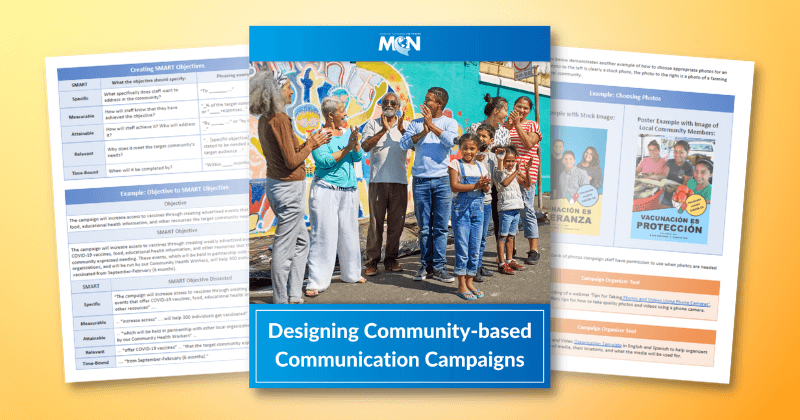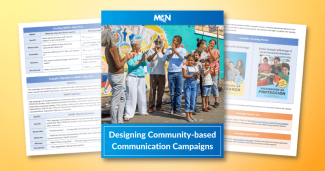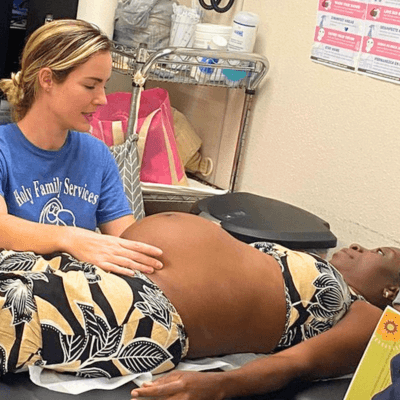New Resource: Manual on Designing Community-Based Communication Campaigns, in English & Spanish

COVID pandemic funding is winding down across the country, but pandemic-era communication troubles remain. Trust in public health authorities has stayed low; health misinformation continues to circulate. These issues have spilled over into critical public health issues like childhood vaccine uptake.
How can health advocates, community health workers (CHWs), outreach workers, and community members best reach the segments of their community with critical health messaging, battling misinformation and building on their trusted community relationships, when they have limited funding or expertise? Migrant Clinicians Network’s (MCN’s) new communication manual, Designing Community-Based Communication Campaigns, available in English and Spanish, seeks to equip communities with detailed information so they can do just that.
For decades, MCN has supported and encouraged health departments, community health centers, CHW and outreach teams, and community members to work together and use their knowledge of best practices and community differences, to improve public health. Since 2020, MCN, in partnership with the National Resource Center for Refugees, Immigrants, and Migrants (NRC-RIM), has developed and implemented resources for campaigns intended to reach vulnerable and marginalized communities in the US with unique cultures, languages, and values. While originally created for the promotion of COVID-19 vaccines, this manual offers campaign designers a completely customizable set of materials which can be easily edited for free to address any public health concern moving forward.
The thoughtful design of a campaign is especially important when the community a campaign designer wishes to reach is distinct from the larger surrounding community – with differences in language, dialect, education level, culture, norms, values, political preference, geographical location, employment type, or demographics. These “hyper-local” communities may have a unique understanding of a public health topic compared to the surrounding mass public, even within the same town or city. Therefore, messages, images, and campaign designs will likely need to be tailored specifically to that hyper-local community in order to successfully address unique fears, concerns, or needs for a knowledge or behavior change on a topic.
Designing Community-Based Communication Campaigns reflects MCN’s commitment to increase access for everyone to approachable how-to resources so communities can design campaigns that are culturally and linguistically contextual. The manual, which integrates MCN’s experiences creating campaigns with best practices in campaign design, takes participants through the entire process of designing a hyper-local community public health, social change, or social action campaign, using clear examples along the way, and offering links to campaign design tools throughout the manual. The manual includes a wealth of information including information on:
- Community resource mapping
- Evaluating and selecting communication strategies and materials
- Photo and video consent and collection
- How to build and use a needs assessment
- Establishing campaign objectives and goals
- Choosing communication channels
- Building campaign tactics, strategy, and partnerships
- Campaign implementation strategies
- Evaluation, data collection, and reporting on the campaign
MCN sees this manual as a resource for new CHWs as well as knowledgeable CHWs who wish to refresh their understanding of strategy-informed campaign design. MCN also sees this manual as being a critical resource for clinics, health departments, and community organizations who wish to involve communities in creating relevant campaigns, and even good citizens who wish to positively impact the health of their communities. MCN hopes the manual promotes health equity and will allow users of the manual to address new public health concerns while using best practices gained from our collective experiences during the COVID-19 pandemic.
Resources
- MCN’s Designing Community-Based Communication Campaigns manual is available in English and Spanish.
- Access editable campaign resources and campaign designer tools here.
- Log in to post comments





